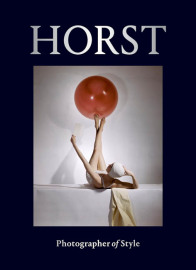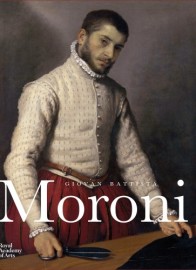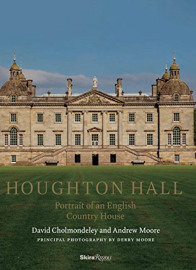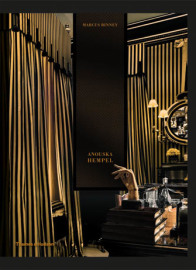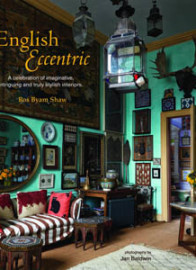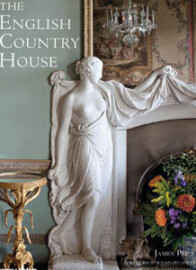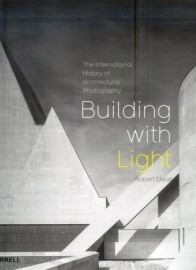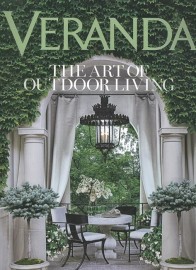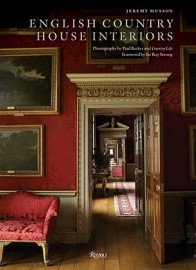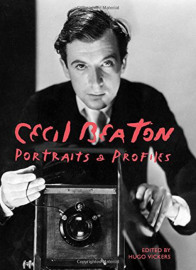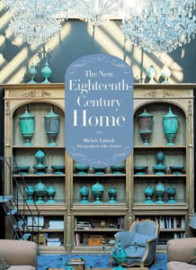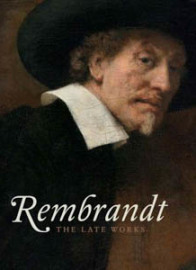A Day in the Life – artist and graphic designer Matthias Jung talks to us about Swabian specialities, diapers and his search for the inner truth of buildings through his surreal architectural collages…
I used to start the day with waking up. One main advantage of being a freelancer and artist is to organize the time on one’s own. The alarm-clock rings between 5.30 and 7.30. I address myself on the working time of my wife Michaela – a psychologist. This article should be called “a day in the former life…“. In two and a half month my first child will be born. “Waking up” will have a new meaning then, I guess.
I’m the authorized representative for the breakfast. We love to eat grain pulp with kiwi or apple. But the most important breakfast ingredient is “Ricoré”, a french instant coffee with chicory. You can’t buy it in Germany. Therefore I travel to France sometimes to buy new stuff. I disguise those trips as photo tours. After Michaela left the house for work, I drink a second Ricore and open my laptop. It’s a good day. I finished all my graphic projects. The new designed culture program of the nearby city is already in print. That enables me to work as an artist today. And I will start a new “surreal houses” collage.
As mostly in the beginning I feel a little bit timid. The magical image is still only in my head. And I have to confront it with reality. That’s a little bit like throwing a good friend into deep water, not knowing if he can swim. But it isn’t that severe with a third Ricore. I open my photo-archive of buildings. It contains all kinds of buildings. But they have one thing in common: a kind of personality. They are shy, eccentric, arrogant, cosy or romantic but never just practical.
I spent some time to check all the files and collect a pool of possible components for a new collage. Sometimes it’s a bothersome work to cut out all those buildings with Photoshop. But today it’s meditative. I listen to some fine Canadian music. I have a small collection of special music. It’s a hobby to search for the diamonds in the vast ocean of recordings. I strongly recommend the Canadian songwriter scene. Many Canadian artists are assisted by the State, so they are able to produce non commercial, very personal music. Check out Bry Webb, Barzin, The Henrys, Tanya Tagaq and Christine Fellows. I think it’s a miracle why people enjoy that obtusely pop music in the charts. For me it’s like eating a board of Styrofoam sometimes.
Back to my collage. After 2 hours a construction appears that looks like a rough collage. And it looks ugly. I’m disappointed and a little bit angry. Then I stare at it for a while and try to find the “magical image” in it. At the end I resume: “OK, there’s still hope”. Making collages is a challenge for an impatient person like me. I decide to delete some buildings and to cut out others. The change comes after another two hours of concentrated work. Suddenly there is a poetic tension in the image. From now on the collage creates itself. The inner logic of the finished image is already there and I just have to clothe it with reality.
But my stomach reminds me that I’m part of the physical world. So I leave my house and walk to a nearby supermarket to buy some “Maultaschen”, a Swabian speciality. It’s a bag of pasta, filled with meat and herbs. I used to combine it with tomatoes and other vegetables. I’m from the northern part of Germany. Nobody eats “Maultaschen” there. Here in Swabia it’s a kind of basic nutrition. I like the many traditions in the different regions in Germany. My wife Michaela comes from Bavaria. In Bavaria the world feels different. As if there would be a slightly different pitch in the “symphony of thoughts and feelings”. The Bavarian people are masters of adding “soul” to the things of everyday life. I think that’s the reason for their popularity around the world. Sometimes we both listen to traditional Bavarian Music in the radio. It’s like paradise. But I can’t stand it too long. It’s too nice.
Paradise isn’t a place to live in. It’s a place of longing.
Today it’s a sunny day. After the meal I go out for a longer walk. I used to walk a lot. My shoes always have a short life expectancy. It’s spring. I stray around the blooming orchards. Cherries and apples. It’s not an economically organized plantation but a “rag rug” of small privately owned gardens. This small region is run by a labyrinth of country lanes. With its little huts it resembles the land of Hobbits. For me it’s a perfect interaction of gardening and nature. The air is full of birds an insects. Wow, there’s really a world outside my laptop.
After enjoying nature I continue my collage. I’m eager to do that. But before that I ask Google about the advantages of multiple-way cotton diapers. They are cheaper than the one-way diapers, better for the environment but you have to wash them continuously. There are so many decisions to be made before the child is born. Back to the art. It’s a challenge to adapt the single elements to the whole collage. Brightness, contrast, color: in the finished collage all the different elements have to look as a unity. Therefore I take photos only when it’s cloudy. Shadows cannot be adapted. For me it’s still a miracle why a certain architectural detail harmonize with another or not.
I don’t know the underlying rules of design but I know when I have violated them.
My images are basically collages of associations. Human beings are not able to reflect a physical object as a physical object. If we are not strongly depressed we reflect the material world always as a complex matrix of mental attractions. That’s the reason why we travel long distances to visit medieval towns. Watching this architecture we may experience a reconciliation of physical needs with mental belongings. The houses look cosy, soulful, “human”. That’s really funny. We have so much knowledge, creativity and money today. But the most popular architecture came into being in an age with strange diseases, superstition and suppression. The fascination of creating collages is the fascination of evoking a certain “mental matrix”. That’s why I call my surreal houses “architectural short poems”. I’m still sitting at my desk, working with a strange intoxication now. It feels as if the image uses me to get finished. The time elapses very fast. My surreal architecture grows steadily and I really forget the world outside. My computer and me: a strange unity.
“Oh, shit” it’s already 5 o’clock. I have to do the dishes, clean up the apartment and leave the house. This evening I want to rehearse theater. I hired a small chapel in a nearby town for that purpose. Since 3 years I perform my own plays. My actual programme is called “8 ways to cross a forest”. It contains also dance and the presentation of my collages. For me “forest” is a symbol for all the unconscious stuff in our heads. My short stories are expeditions into this forest. Like my collages they function in the logic of dreams. Playing theater brings me into a very different energy than making collages. When I worked too long on a collage I might feel a little bit “lost in space”. The theater brings me back into the body. The texts are bizarre and existentialist.
I spent a lot of time thinking about the basic condition of life and the things beyond. When I watch animals (I love chickens, dogs and sheeps) I always think about their view on life. How is it to be a sheep? What is life beyond intellectual thinking?
I’m interested in the truths beyond the “filter” of culture and religion.
On the stage I want to be “the” human being, not a person of this time and culture. I know that this is a unreal claim but it’s my focus.
My dancing is very unprofessional. I began dancing in the age of 38! I just dance my personal emotions. That may look rough or embarrassing. But that’s me. The quality of my dancing is in the “not-knowing” and “not-thinking”. Late in the evening at 11 o’ clock I return home. Michaela takes the same train. She returns from her choir in Stuttgart, the capitol of Swabia. At home we sit together in the kitchen and enjoy a fruit tea or citron juice with hot water. Time to go to bed.
German artist and graphic designer Matthias Jung’s first experiments with “surreal homes” began as a boy in his father’s photo lab. When he returned to his childhood project in January, he abandoned the scissors and glue for Photoshop, working mostly on photographs taken on trips to northeastern Germany. He has called his creations ‘architectural short poems’ that are intended to challenge perceptions of space and architecture. “Collages are like dreams,” says Jung, “or maybe dreams are like collages.”
You can view more of his work on his website. Main Image Heiliges Land. Image © Matthias Jung




















